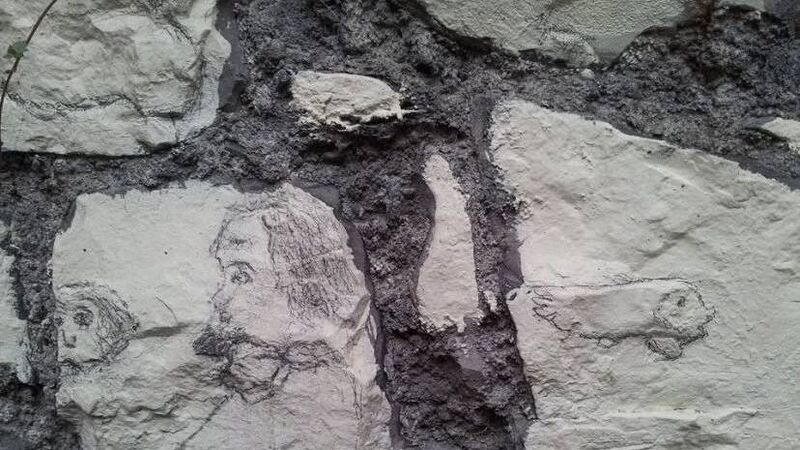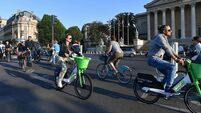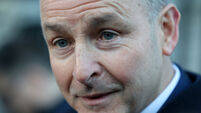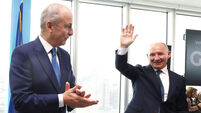What you lose when you use AI to make art

Stone drawings by Brendan.
I’m addicted to convenience, and I don’t think I’m alone in that. I love the idea of ordering a meal on an app, or streaming a film at the touch of a button. So I’m grateful that I nurtured the habit of trying creative things before artificial intelligence (AI) went mainstream.
Making art without AI is special for two reasons: Firstly, the act of creating art itself is therapeutic and reflective. Secondly, art from an individual is an undiluted, distilled piece of the artist.
Let’s start with the creation.
The promises of AI when it comes to creativity are tempting. Painting a picture, learning an instrument, or writing a novel is absolutely, uncompromisingly painstaking. So isn’t it nice to give a prompt and have AI expand on your idea and give you a finished product?
As I type this, there are AI-generated pictures, books, and even albums available to curious consumers.
It’s fair to say that the human effort required is considerably lower when AI is involved.
However, this overlooks something key: The act of creating is just as valuable as the finished product, if not more so.
As a freelance writer, I’ve completed three unpublished novels and one optioned screenplay. I also dabble in drawing and painting.

Reaching “the end” after 50,000 words is gratifying (to paraphrase JFK) not because it’s easy, but because it’s hard.
Outsourcing that to a machine would be like paying somebody else to run a marathon for you.
We’re constantly chasing escapism and a slower pace. Creative pursuits provide those things, asking nothing but time in return. Painting a picture takes as long as it takes.
(The financial barrier to entry in creativity is incredibly low — as cheap as a pencil and paper or a tin whistle — which is why great art doesn’t necessarily come from the most prosperous places.)
While consuming art is (correctly) seen as a form of escapism, we often overlook how profound that feeling is when making art.
Writing a story is a form of hallucination, becoming so deep that eventually the characters will nudge you forward.
You will eventually learn what is consistent and out of character for these imaginary friends.
Authors often complain of missing old characters, and return to them for follow-ups — sometimes decades later.

Little wonder, so, that art and therapy are often intertwined. Art therapy doesn’t exist so we can find the next Rembrandt. It serves a different purpose, and it is a common and important element of rehabilitation, psychological healing, and communication.
The American Art Therapy Association promotes art therapy for a range of circumstances, including children on the autism spectrum and soldiers suffering from PTSD. Its website is a slew of inspiring quotes.
“Art-making encourages self-exploration and expression,” it quotes Natasha Green, an art therapist in private practice at Green Amethyst Art Therapy.
“It encourages more vulnerability simply through art being an expression of oneself. By externalising their emotions, thoughts, and behaviours through art, they may feel less judgment and/or shame toward themselves.
“Art-making may give clients an increased sense of control over what they disclose.”

Louise Quinn, a senior art therapist at St Patrick’s Mental Health Services, says: “Participating in art-making and viewing art can involve a complex interaction of cognitive, emotional, and physical processes. Art can stimulate these processes and positively impact our mood and reduce stress and anxiety.
"Art has also been shown to assist in reducing our perceptions of physical pain, help people become more engaged in healthcare treatments, and can help reduce the length of time spent in hospital.”
Art is also an unmistakable imprint of its creator.
As I type this, a painting of mine hangs on our living room wall. Not far from that hangs a caricature of my wife and I on our wedding day. Every night, we eat from a beautiful salad bowl that another friend made for us.

On a more rambunctious note, a different friend composed and performed a rap song about us at our wedding — which is a video that I return to when I need a smile.
Our daughter, aged 9, draws doodles, sings songs, and makes up jokes constantly. My late father-in-law had a quirky habit of drawing faces on the stone grooves in the wall of his backyard.
All of these priceless decorations to our life are special because they 100% come from the person and their lived experience. Nobody else could have made these pieces of art the same way.
That painting, drawing, song, and bowl, are as distinct as fingerprints.
“A book is a heart that only beats in the chest of another,” Rebecca Solnit said.
Whether you’ve thought about it or not, we constantly connect in an emotional level with someone we’ve never met, whether that’s from a joke by Tommy Tiernan, a song from K-Pop Demon Hunters, or even graffiti that caught your eye on the way to work.
We humans leave traces of ourselves every time we hum a tune or scribble a doodle. Every time that happens without AI intervention, I’m grateful.
















